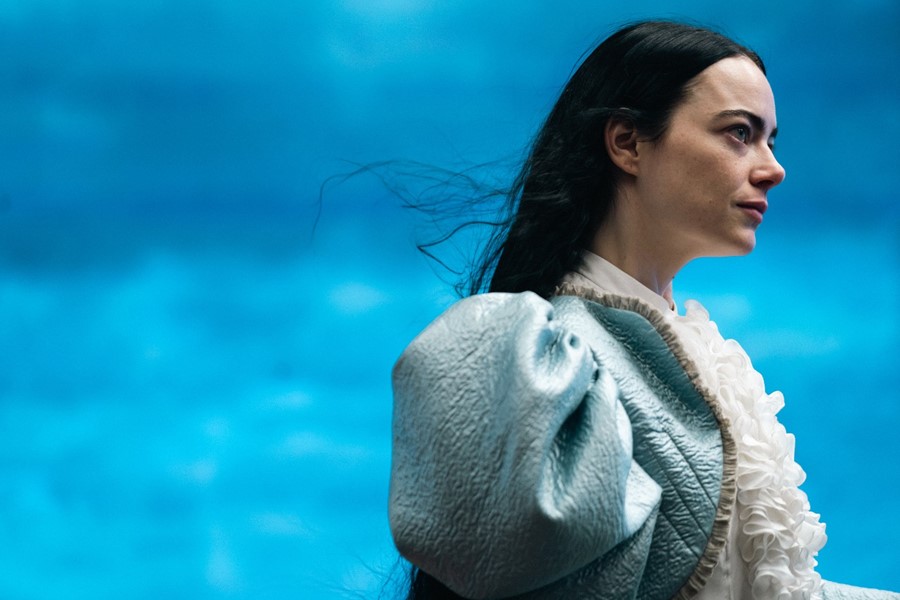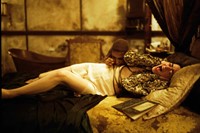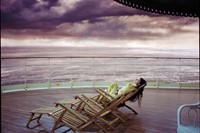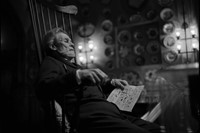Costume designer Holly Waddington talks about using a colour palette of “rotting apples”, putting Mark Ruffalo in a corset and thong, and how Emma Stone’s costumes mirror her trajectory in the film
In Yorgos Lanthimos’s Poor Things, the once-dead Bella Baxter (Emma Stone) is a woman reborn, literally. Reanimated by mad scientist-cum-father figure Dr Godwin Baxter (former AnOther Magazine cover star Willem Dafoe), Bella’s brain has been replaced with that of a baby’s. What follows is a depiction of the passage of girlhood: Bella relearns to walk and talk in a series of confectionery delights created by costume designer Holly Waddington.
As the film progresses, a rapidly maturing Bella soon trades toddling for tantric sex; ruffles, seersucker, and a bustle cage sans cover are replaced by louche, diaphanous numbers, with even a coat akin to a condom making an appearance. Existing outside of society’s gaze, she embarks on a series of adventures and finds social and political liberation through sexual intercourse.
A surrealist, sci-fi reimagining of a woman’s coming-of-age story, Poor Things flirts with being a male fantasy of female empowerment. Yet, unaware of and unaffected by societal norms, Bella’s choices are driven by her own semi-scientific curiosity rather than patriarchal demands. Her wardrobe reinforced this, Waddington said: “It was important that she wasn’t forced into corsets and that her clothing was assembled by her. She doesn’t follow any sartorial rules – it’s always on her terms.”
Below, Holly Waddington breaks down her design process, including how she got to those puffed sleeves, which were “all about empowerment.”
Violet Goldstone: How did you join the project?
Holly Waddington: I designed the pilot episode of The Great, which was written and produced by Tony McNamara, who wrote The Favourite and Poor Things. He made the introduction to Yorgos [Lanthimos].
VG: What was your brief? And did the film’s 19th-century setting shape it?
HW: [Lanthimos] made it clear that he didn’t want it to look like a period drama or too sci-fi, and wasn’t too bothered about when it was set, although we agreed to keep it to the 19th century. The brief was to play and experiment; I pushed Martha Von Kurtzrock, who wore her hair in the Marcel wave, and Harry Astley into the 20th century. The idea behind their modernity is that they represent her intellectual awakening.
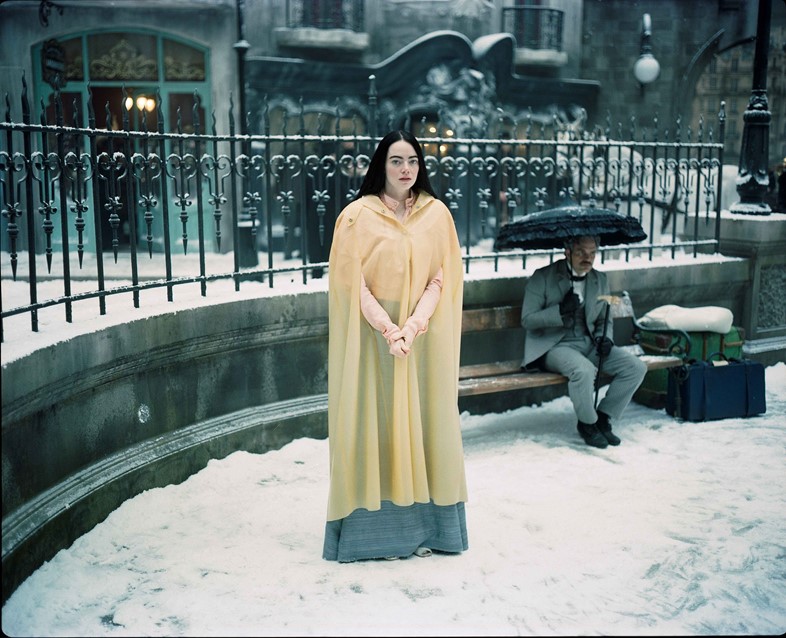
VG: Were there any references you looked at?
HW: The only reference [Lanthimos] gave me was a photo of inflatable trousers made out of latex by a young British brand, Harri. From that, I took the idea of air and made a body of very experimental work: lung-like sleeves, textured fabrics, small shoulders paired with huge arms and curvaceous bottoms and legs. Then we calmed it down.
VG: Tell me more about the textures and colours, and what was on your moodboard?
HW: I looked at anything that had bodily textures. I had references of shells and sea anemones on my walls; the shapes needed to be fluid and organic and any patterns or textures needed to not have straight lines. It was Georgia O’Keeffe-y.
For colours, I worked with Shona Heath and James Price’s palette of dusky pinks and petrol blues taken from anatomical drawings. When I described it, Yorgos called it the palette of rotting apples. I googled and the exact colours came up: the creaminess of a browning apple, acid yellows, sumptuous pinks – so we lifted the palette from that.
VG: A central theme is Bella’s character growth; she goes from having the mentality of a toddler to a sexually and politically liberated woman. How do the costumes reflect that arc?
HW: At the beginning of the film, it’s like she’s been dressed by Mrs Prim. She’s got ladylike clothes in childlike fabrics, but because she’s like a little girl, she becomes undressed very quickly – starting the day fully dressed, by mid-morning she’d have lost her skirt.
There was a transition when she got to Lisbon. The clothes grow and develop with her, from seersucker and quilting to being more grown up. And, for the first time, she’s got to dress herself. Still, she doesn’t think to get her skirt on to go out – she just goes out in knickers. But they’re no longer like nappies. They’re nice, silky knickers.
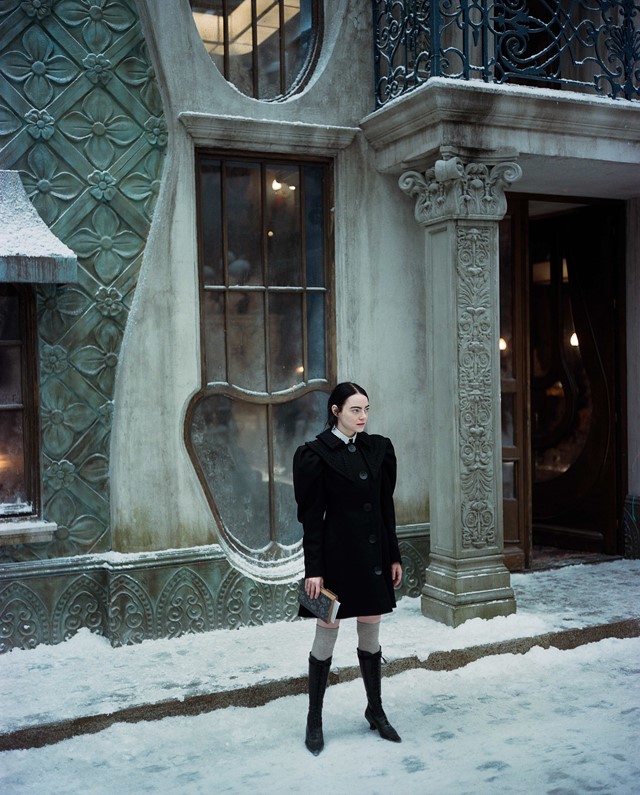
VG: There’s quite a dramatic shift in Bella’s wardrobe after she arrives in Paris and starts working in a brothel. What inspired that?
HW: I wanted to subvert what we associate with sex. We all know Victorian brothel imagery: corsets, stockings and contorted boots, the palette often black and red. Instead, I worked with skin tone colours and didn’t use corsets at all. As a period costume designer, whilst I love a corset, the idea of shackling her body and forcing it into a particular shape felt wrong for the film. Instead, we celebrated the body by getting rid of them, exposing the breasts, and had pubic hair peeking out of low-cut frilled hot pants.
VG: That’s an interesting contrast to Duncan Wedderburn, who wore a corset.
HW: For Duncan Wedderburn, I looked at 19th-century cartoons of ruling-class British men. Their chests are puffed, they're wearing hats to look taller, and are sticking their bums out – they look bonkers. I wanted him to have the body shape of one of the cartoons I’d seen. I made him body padding: he had buttock-enhancing pants, a phallus, and subtle chest padding. He also wore a corset and a thong.
VG: What was it like working with Emma Stone?
HW: Emma Stone is a joy to work with. Sharp as a tack, imaginative, funny … she embraced and embodied every idea. She also brought a lot of ideas.
Poor Things is out in UK cinemas now.
